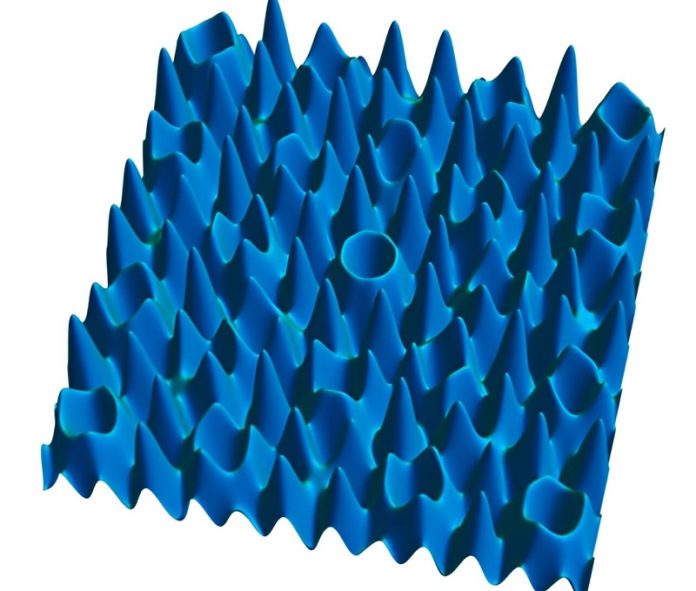
Scientists at the Cavendish Laboratory in Cambridge have created a new phase of matter, called a Bose glass, that challenges traditional understanding of how particles behave.
This discovery, published in Nature, could have significant implications for quantum computing and our understanding of matter.
The Bose glass is an unusual form of matter where all particles remain localized, meaning they don’t mix with their neighbors.
Imagine stirring milk into coffee, and instead of blending into one color, the swirls of milk and coffee remain separate forever.
That’s what happens with particles in a Bose glass—they stay in place, unlike in most materials where particles move and mix.
To create this new phase, the researchers used overlapping laser beams to form a special structure that is ordered but never repeats itself, similar to a Penrose tiling pattern.
Then, they filled the structure with ultracold atoms, cooled to nearly absolute zero. This extreme cold allowed the atoms to form the Bose glass.
Professor Ulrich Schneider, who led the research, explained that this discovery is important for both theoretical physics and practical applications, like quantum computing. In traditional systems, particles mix with their surroundings, which causes stored quantum information to “leak” over time.
However, in a Bose glass, particles stay in place, which could help preserve quantum information for much longer.
“One big challenge in studying large quantum systems is that they are too complex to model on a computer,” Schneider said. “But now, we have a real-life example we can observe and study in detail.”
The Bose glass is what scientists call “non-ergodic,” meaning it doesn’t lose its details over time. In most systems, knowing just a few key facts, like the temperature, is enough to predict how the system will behave.
But in a Bose glass, every detail matters, making it a prime candidate for further studies on many-body localization, a phenomenon that could play a big role in future quantum technologies.
The researchers also observed a sharp phase transition in their experiment, where the Bose glass suddenly changed into a superfluid—a state of matter where particles flow without resistance, like ice melting into water. Superfluids share some properties with superconductors, which are important in technologies that require the transfer of energy without loss.
Dr. Jr-Chiun Yu, the study’s first author, explained that understanding this transition between a Bose glass and a superfluid could open the door to new studies and applications, especially in quantum computing.
Since quantum information stored in a localized system like the Bose glass doesn’t leak out, it could be a powerful tool for preserving data in quantum computers.
While the discovery is exciting, the scientists urge caution. “There are many things we still don’t understand about the Bose glass and how it might connect to other phenomena,” said Schneider. “Before we think about applications, we need to answer more fundamental questions.”
This groundbreaking research could be the start of something big in the field of quantum physics, but there is still much to explore.



